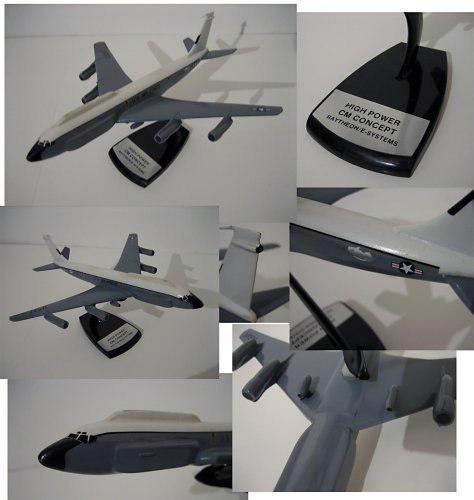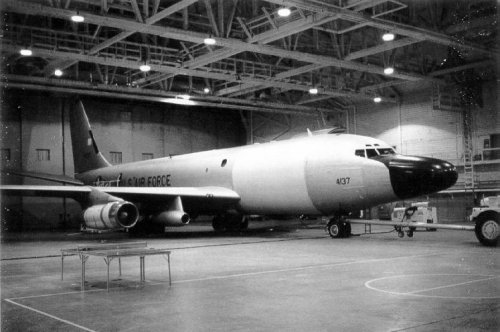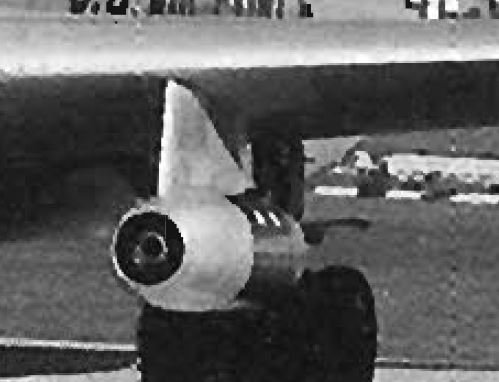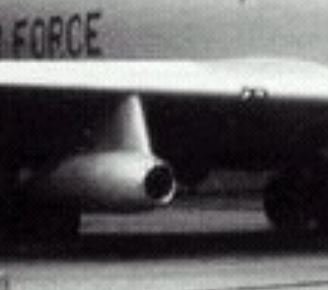After checking all my sources, the pods would seem to be different from each other, at least on the RC-135E. The pod on the port (left) wing contained a T-55-LS turbine engine powering an electrical generator set. The pod on the starboard wing contained a radiator that helped dissipate the heat generated by the Hughes radar and its associated equipment. This would seem to be borne out by the pictures of the pods in that they look different.
Also the cause of the loss of Rivet Amber was never resolved but two of my books mention that it is was believed (most likely cause) that a failure of the fiberglass radome structure was to blame.
The crash report states: "On June 5, 1969, Rivet Amber departed Shemya for a flight to Fairbanks for routine maintenance. About thirty minutes after departing Shemya, Rivet Amber (callsign Irene 92) transmitted the following message to Elmendorf AFB: "Elmendorf Airways, Irene 92 experiencing vibration in flight. Not certain of the emergency. We have the aircraft under control, Irene 92." This was the last radio contact with the flight. Unidentified microphone keying clicks continued until 10:22. The aircraft crashed at sea."
Sources:
http://aviation-safety.net/database/record.php?id=19690605-0
KC-135 Stratotanker in Action - SSP 118 - by C.M. Reed
Boeing KC-135 Stratotanker - More than just a tanker - Aerofax - by Robert S. Hopkins III




